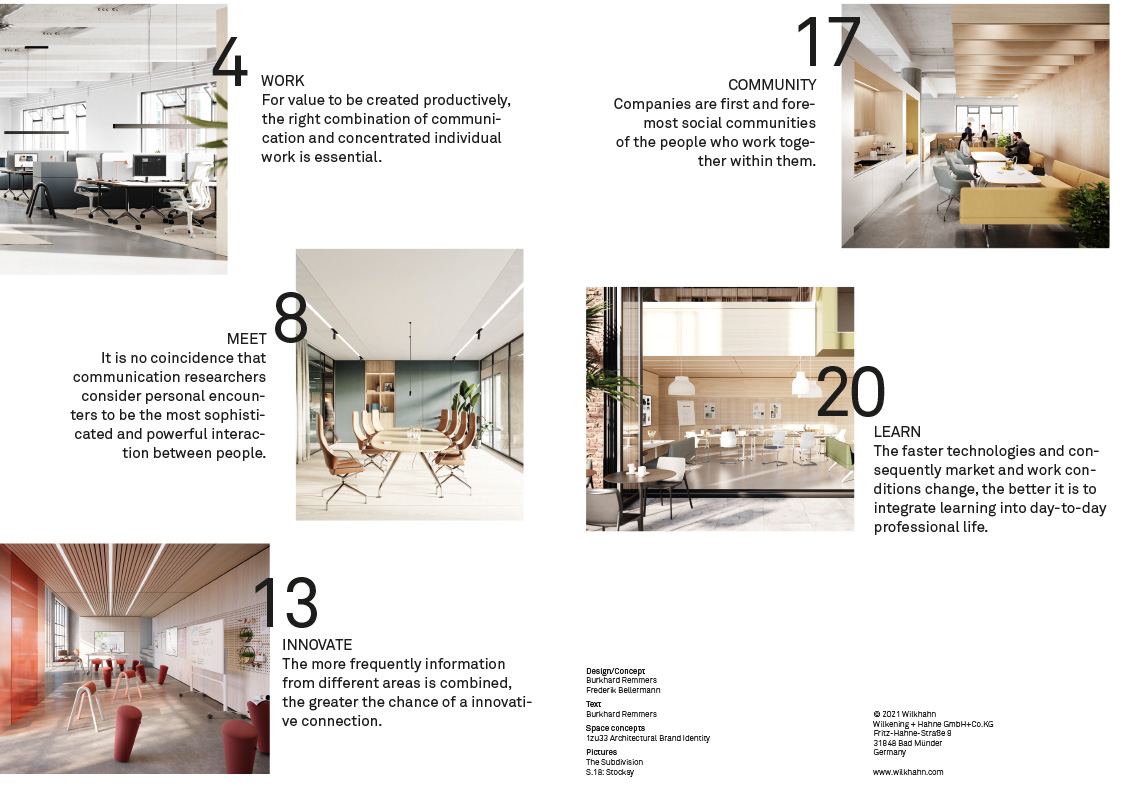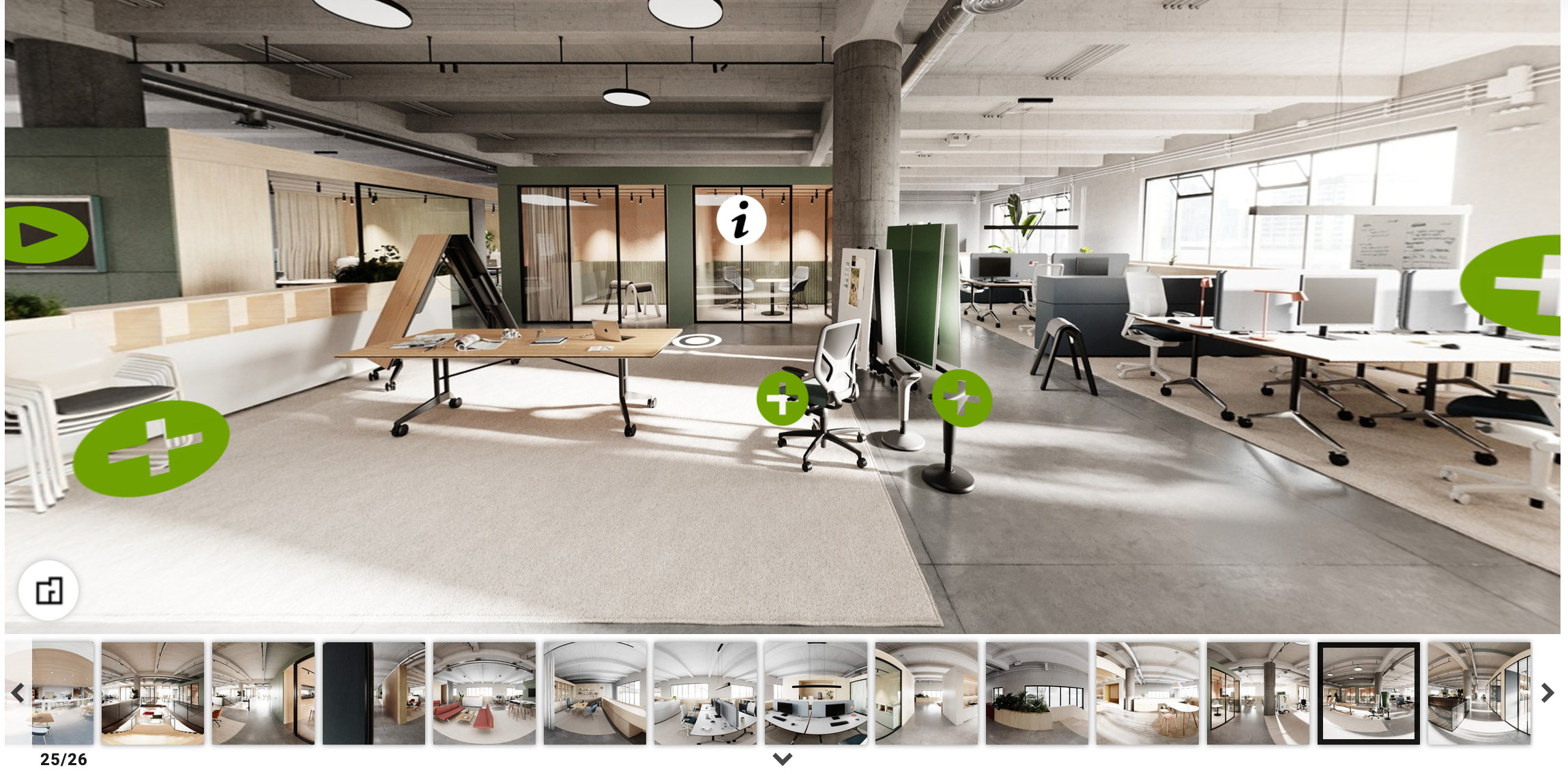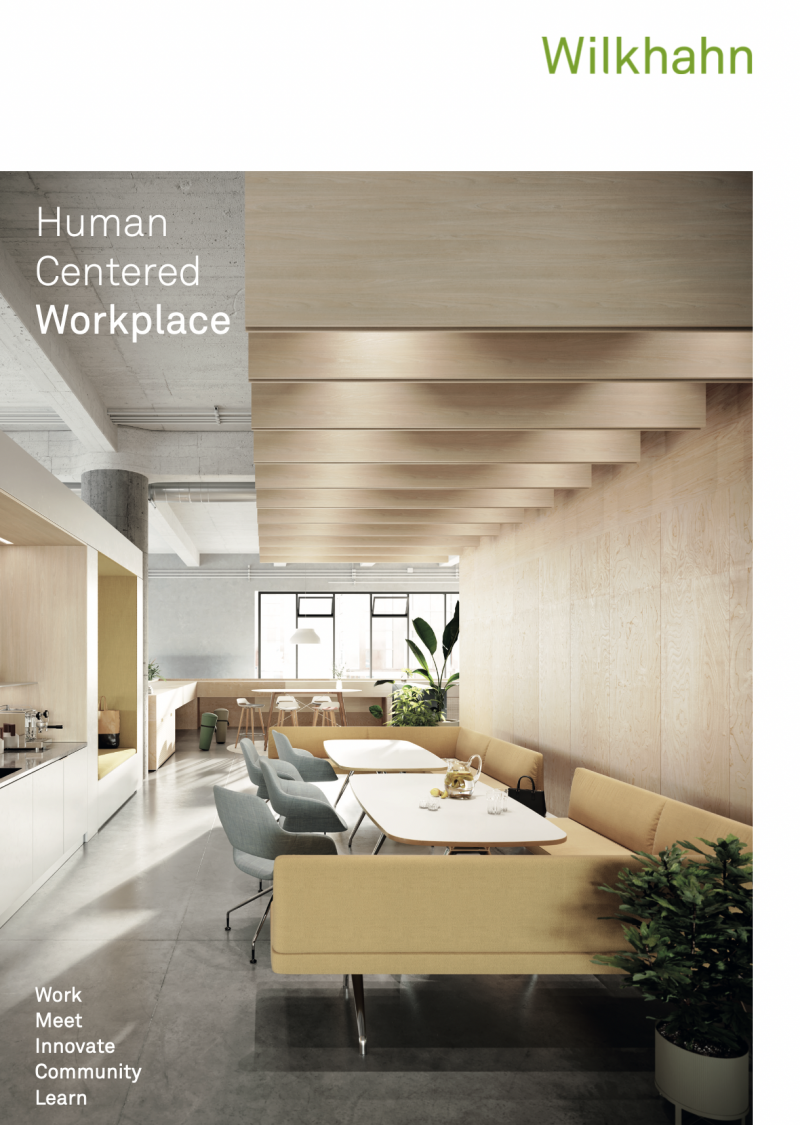Wilkhahn’s Human-Centered Workplace is a concept for planning offices that echoes the global trends of sustainability, health concerns and digitalization. We wondered what’s required of an office that views people as value creation’s driving forces. The answers spawned areas requiring action when designing future-proof office environments.

The five areas requiring action when planning a human-centered workplace
A workplace can be responsible for creating moods and atmospheres. It’s somewhere where people bump into and interact with one another spontaneously. In fact, there are lots of benefits to a physical rather than a remote workplace. For the advantages of office spaces to come to the fore, they need to be focused on people. The Human-Centered Workplace white paper offers practical answers to the issues in the real world.
Working Communicating and collaborating are considered the keys to meeting the upcoming challenges that digitalization presents to nearly all aspects of the working environment. How do we come up with the right combination of options to allow communication and deep work to create added valueproductively?
Meeting There’s a good reason why communication researchers consider people meeting in the flesh to be the most complex yet most effective form of human interaction. How can offices support and encourages the different types of personal interaction?
Innovating When information from all sorts of disciplines is provided more often, it’s more likely to lead to an innovation. Digitalization, climate change, health – if innovations and changes lie at the heart of the office as a workplace, where can and should these take place?
Fostering a community spirit Because workplaces are, first and foremost, communities made up of the people who work there. How can we design offices to strengthen that feeling of being part of a community?
Learning The faster technologies change (and therefore market and working conditions too), the more important making learning part of day-to-day working lives is. How do we create concepts for rooms and furnishings that support different types of learning with others?
A holistic design of office environments
The human-centered workplace puts the social and personal needs of people at center stage. As a result, complex tasks in terms of the workspaces themselves can be solved in different cultures. We developed example settings with renowned design studio 1zu33 to illustrate a potential workplace where people remain productive and enjoy working in tomorrow’s world too.

Subscribe to our newsletter
We’ll tell you about exciting events, stories from the office world and interesting new products in our newsletter once a month. Subscribe here
Further information
The Human-Centered Workplace magazine won the Red Dot design award just recently.
Alina Schnizler and Aiko Telgen from Wilkhahn’s design team explain how mood boards help interior design processes to reflect the principles of the human-centered workplace.
The interactive tour through the virtual building gives a 360° view of a fictious human-centered workplace.

